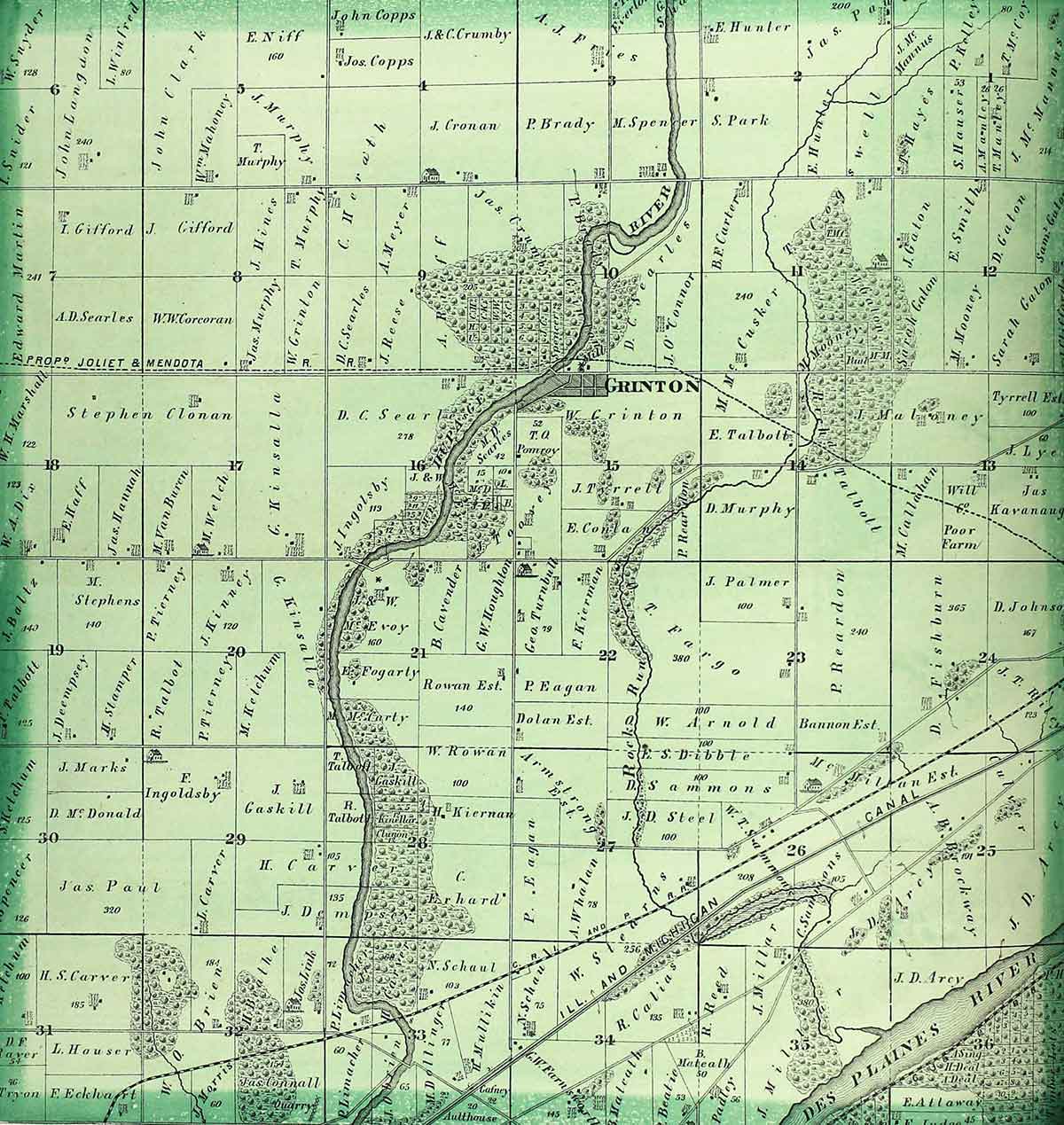Gina Wysocki, author of Digging Up the Dirt: The History and the Mysteries of the Will County Poor Farm and Potter’s Fields, writes that “The need for a poor farm in Will County came from the request of the Will County Board of Supervisors on November 12th, 1850. The Board of Supervisors appointed four men to serve as the Committee of the Poor. … The Committee was to seek out, negotiate, and purchase a parcel with or without improvements to relieve the County poor. The parcel would need to be composed of ten to one hundred and twenty acres of land and centralized within the county for convenience. If the committee were unable to find a suitable parcel, the committee had to locate a temporary tenement until one could be found.”
The Will County Poor Farm would house residents who were either abandoned by their families, homeless, ill or orphaned. The Poor Farm was located at the present day Mission Boulevard, south of McDonough Street, on the west side of Joliet. The former administration building for the farm still exists on this site. A cemetery located on the property contains approximately 150 graves of Poor Farm residents.
In a Chicago Tribune story, reporter Mary Owen writes “Run by the county from 1850 to 1955 as a working farm, it was home to more than 200 poor people, including abandoned children, injured Civil War veterans, alcoholics and people with mental or physical disabilities.”
On the farm, residents grew a variety of crops, including tomatoes, potatoes, asparagus and tobacco. By the mid-1850s, according to Wysocki, the farm produced 580 bushels of wheat, 30 acres of corn, 25 bushels of potatoes, and two bushels of white bean.
Wysocki writes that Grinton would be the one responsible for supplying the Will County Poor Farm with the needed supplies to run the operation.
Around 1878, Grinton’s mill was sold to J.I. Mather. Born October 19, 1802, Grinton was in his mid-70s at the time. Magosky writes that Mather “was the owner and did have financiers when the mill was destroyed by fire never to be rebuilt. Mather sold the property for farm land to pay off his creditors.”
Grinton died on January 21, 1884, in Joliet. The whereabouts of his grave are unknown, although his son, William Grinton Jr., William Jr.’s wife Sarah Anna and four of their five children are buried at Oakwood Cemetery on East Cass Street in Joliet. A road near the cemetery, flanked by East Jackson Street on the north and East Cass Street on the south, bears the Grinton name. Whether the street was named for Grinton Sr. or his son isn’t certain. However, the Grinton family did own property in the area.
William Wallace Stevens, author of Past and Present of Will County, Illinois, writes that Grinton Sr. “was one of the prominent pioneer business men of the county and his labors were an important factor in the substantial development and improvement of Plainfield and the surrounding country.
“In all of his dealings he was reliable and enterprising and commanded the respect of all who knew him.”
Lead image by Chad Merda
Contributors: Rose Scofield and Laura Kiran

)
)
)